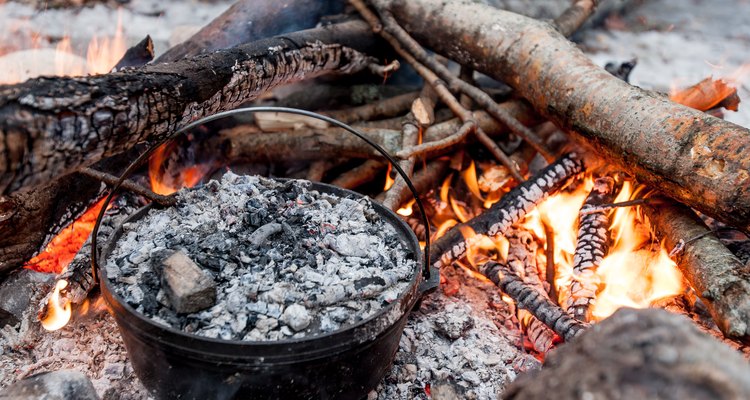
AvatarKnowmad/iStock/GettyImages
Cooking on a camp stove with a Dutch oven is easy compared with cooking with one over an open flame: You don't have to fuss with lighter fluid, charcoal or matches, and you can regulate the heat with a turn of the switch. Camp cooking is always messy, though, even under the most ideal circumstances. Cut through some of the mess by cooking and freezing ground and cubed meats ahead of time in plastic freezer bags. Combine other ingredients in plastic bags, so you're merely dumping and pouring ingredients, rather than starting from scratch.
The Method
Dutch oven cooking requires some finesse when you're using charcoal briquettes or wood because you must use the right amount of fuel to control the oven's temperature. Cooking on a propane camp stove, though, is no harder than cooking at home on the stovetop. Rub or spray the Dutch oven with shortening or non-stick cooking spray and add your ingredients. Place the Dutch oven over the burner and heat -- typically to medium heat. Keep the lid on the oven and check the food every 15 minutes for doneness. Stir the food so it doesn't stick -- depending on what you're making -- and add more liquid, if necessary. Put the lid back on quickly to conserve heat.
What to Cook
Dutch ovens are incredibly versatile cooking pots, capable of braising, roasting, baking and steaming foods. You can cook almost any main dish, such as soup, stews and casseroles, over a camp stove. Baking breads is a bit more tricky. When using charcoal briquettes, place some of the charcoals on the lid, so the baked goods receive heat from both the top and the bottom of the oven. This dual heat ensures evenly browned bread. On a camp stove, you only have a source of heat underneath the Dutch oven, so breads won't brown quite as well. The bread still cooks through, and it's moist and delicious, but it won't be golden brown. Try quick breads, muffins and dense brown breads, rather than yeast breads, for the best results. You can also make simple fruit cobblers in the Dutch oven. Combine butter and canned fruit filling, or just canned fruit in its juices, with a yellow cake mix. Bake it in the oven for 20 to 30 minutes for a comforting, fast dessert.
The Benefits
Although charcoal briquettes and wood are the traditional fuels for outdoor Dutch oven cooking, some distinct advantages exist in using a camp stove. A camp stove heats up instantly for fast, reliable and predictable heat with no waiting around for the coals to heat. Camp stoves are safer to use, especially in windy weather, because you're not working with an open flame on the ground. Camp stoves are also cleaner; you don't have to contend with ash or debris.
Choosing a Dutch Oven
A cast-iron camping Dutch oven is so durable that it will probably outlive you, but it's not the only choice. Aluminum camping Dutch ovens aren't as durable as cast-iron, but they're easier to clean and lightweight. Although they don't retain heat like cast-iron ovens, they heat up and cook more quickly -- a definite advantage when using a camp stove. Both types are elevated on legs, so coal can be placed beneath them. The legs are a bit awkward to use on a camp stove. Both also have a heavy, fitted lid with a vertical lip. If you do a lot of outdoor camping, consider investing in both. A cast-iron Dutch oven is best for cooking with charcoal because it stands up to high heat, while an aluminum model works well on camp stoves. You can also use a regular stovetop Dutch oven, which is simply a heavy lidded pot with a flat bottom.
Related Articles
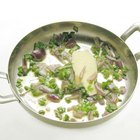
What Is the Best Cookware for Electric ...
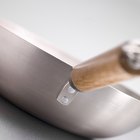
Skillets That Go in the Oven

Anodized Vs. Teflon in Cookware
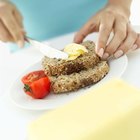
Healthy Butter Substitutes

Can You Grease a Pan With Canola Oil?

Are Halogen Heat & Infrared Waves Safe ...

Why Does Food Stick to a Non Stick Pan?
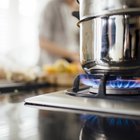
How to Cook in a Gas Stove or Oven

Titanium Vs. Tourmaline Flat Irons

What Are the Benefits of Vinyl Fabric?
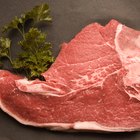
How to Cook a Pork Chop on a Dome ...
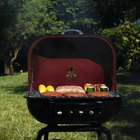
The Difference Between Grill & Griddle

Can Ceramic Cookware Be Used on ...

A Substitution for a Perforated Baking ...
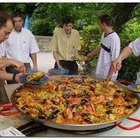
What is a Paella Pan?
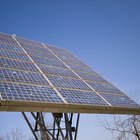
Appliances That Use Solar Energy

How to Clean an Oven Liner

Instructions for How to Use the GiGi ...
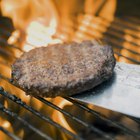
How to Convert a Brinkman Smoker From ...

How to Lower Cooking Times & ...
References
- Utah State University Extension: Dutch Oven Cooking
- What's Cooking America: Dutch Oven Camp Cooking
- The Outdoor Dutch Oven Cookbook; Sheila Mills
Writer Bio
Julie Christensen is a food writer, caterer, and mom-chef. She's the creator of MarmaladeMom.org, dedicated to family fun and delicious food, and released a book titled "More Than Pot Roast: Fast, Fresh Slow Cooker Recipes."